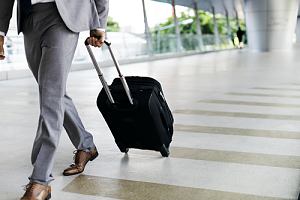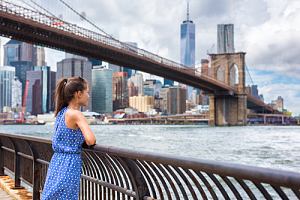The United States welcomes visitors who successfully apply for and receive a B visa to make their trip. B visas, commonly known as visitor visas, are divided into two categories: business and recreational. It is important that any potential visitors to the United States understand this process to pass through a port of entry and be aware of which designation best suits their trip.
B-1 Visa
 The B-1 visitor visa is designated for short-term business trips. Common uses of the B-1 visa include attending meetings or conferences held in the US, managing estates, and participating in construction or installation. The B-1 visa is only applicable to short-term trips and is not intended for extended stays or to seek employment, even if the applicant does not intend to apply to become a permanent resident in the United States. The stay must not be longer than a year and is usually only granted for as much time as is needed for the stated purpose for the visa.
The B-1 visitor visa is designated for short-term business trips. Common uses of the B-1 visa include attending meetings or conferences held in the US, managing estates, and participating in construction or installation. The B-1 visa is only applicable to short-term trips and is not intended for extended stays or to seek employment, even if the applicant does not intend to apply to become a permanent resident in the United States. The stay must not be longer than a year and is usually only granted for as much time as is needed for the stated purpose for the visa.
B-2 Visa
The B-2 visitor visa is designated for recreation, including travel, visiting family or friends, and attending a convention or event. Similar to the restrictions on B-1 visas, these visas may not be used for the purposes of seeking employment or study as a permanent resident would be able to do. The B-2 visa is also only applicable to short-term stays in the United States and is valid in six-month increments.
To qualify for a B-2 visitor visa, applicants should be able to prove they have enough funds for the trip, have an itinerary or schedule they can share with immigration officials, and indicate that this stay is a temporary recreational activity, and they intend to return to their home country during or directly after the allotted time period. Applicants can show this intent by sharing employment or property details with officials that illustrate how they are compelled to return.
Restrictions of B Visas
As previously stated, there are some restrictions on B visas, both on the activities recipients can do and the amount of time on their stay. B visas are also not a single solution for all temporary stays in the United States. Visitor visas are solely intended for use in either a business or leisure purpose, which must be stated by the applicant.
When applying, visa applicants should be prepared to show that they are willing and able to comply with the restrictions for the best chance of success. However, even on successful applications, B visa recipients should wait until they have their visa before making travel arrangements to the United States as entry is not guaranteed under conditions such as natural disasters, pandemics, or missing documentation.
Applying for a B Visa
 To apply for a B visa, applicants must bring some forms of documentation, including a passport valid for 6 months after the visit, filled applications, and a recent photograph. To ensure the best chance of receiving visitor visas, applicants should also be prepared to provide documentation on the purpose of their trip, financial documents, and proof that they intend on returning to their country.
To apply for a B visa, applicants must bring some forms of documentation, including a passport valid for 6 months after the visit, filled applications, and a recent photograph. To ensure the best chance of receiving visitor visas, applicants should also be prepared to provide documentation on the purpose of their trip, financial documents, and proof that they intend on returning to their country.
B visa applicants will usually be required to participate in an interview at their local U.S. consulate or embassy. The purpose of the interview is for the immigration officials to learn of the purposes for the trip and ensure that the applicant intends to return. Applicants should bring all of their documentation to the interview to increase their probability of a successful application.
